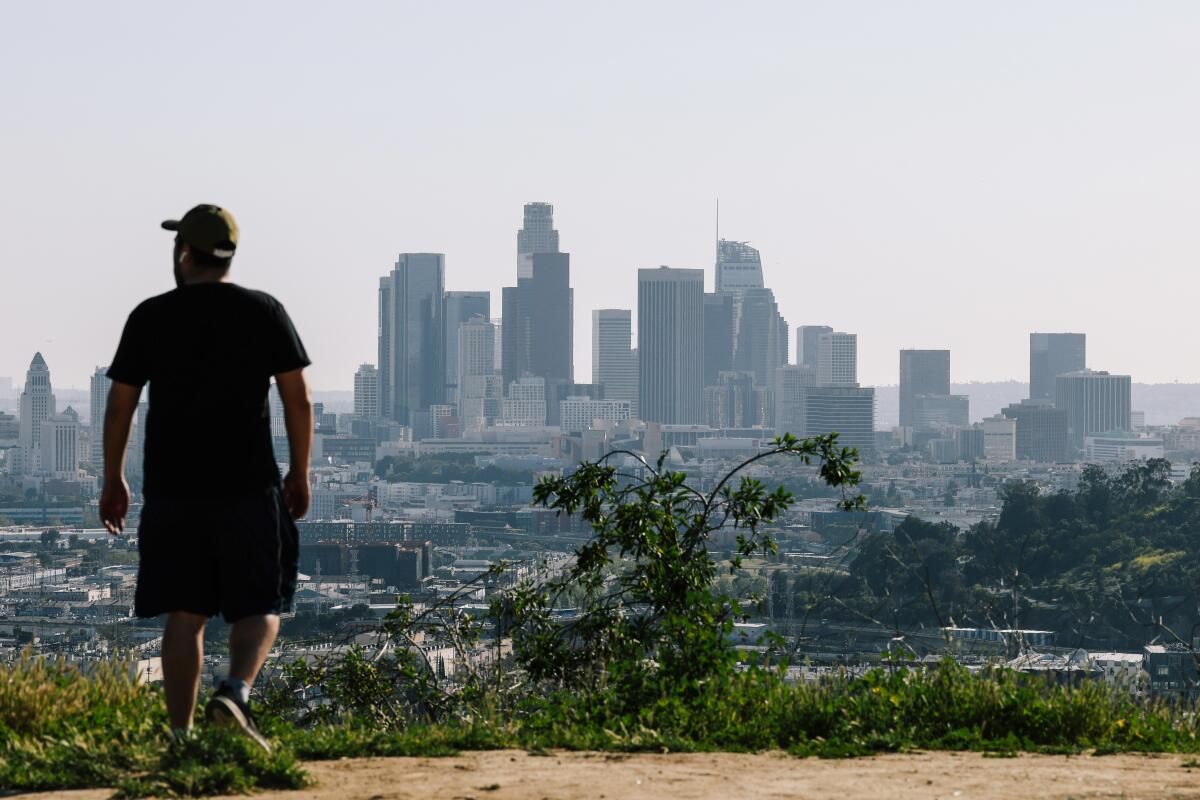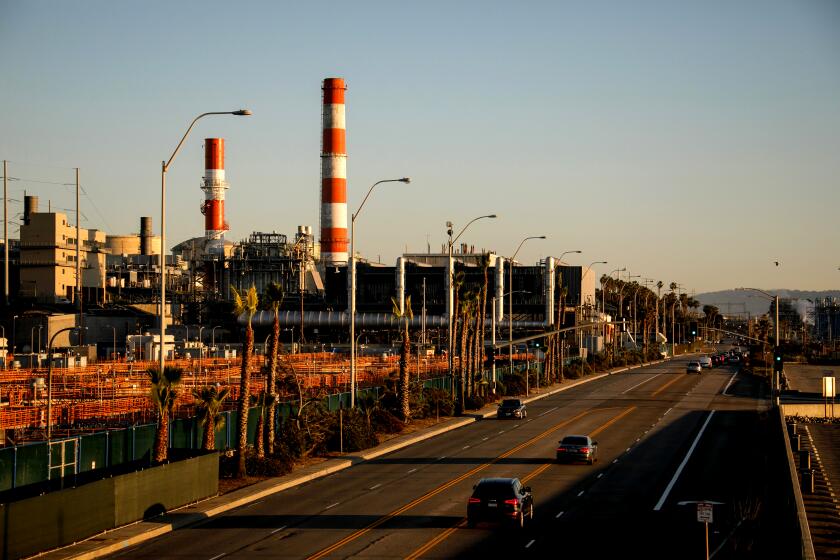L.A. air the ‘cleanest’ it’s been in a decade, but rising temperatures could change that

- Share via
Los Angeles residents may have been starved for sunshine this spring and summer, but scientists say there’s been at least one welcome consequence: some of the region’s cleanest air in years.
Though not necessarily a high bar to clear — Greater Los Angeles has long carried the title of nation’s smoggiest metropolitan area in the annual American Lung Assn. State of the Air report — a stubborn marine layer and cooler temperatures have brought some clarity.
“We can do a pretty rigorous comparison of ozone levels, and on multiple metrics, this is the cleanest that we’ve seen in the past 10 years,” said Scott Epstein, air quality assessment program supervisor at the South Coast Air Quality Management District.
L.A.’s relative avoidance of unhealthful air quality this summer is especially stark given the conditions in the Midwest and East Coast, which have been periodically blanketed by a smoky haze from Canadian wildfires.
Southern California’s May gray has been stubborn. Here’s an explanation. But be prepared for June gloom.
According to Epstein, this year is tied for L.A.’s cleanest in the last decade based on the Air Quality Index. The region has also recorded fewer days exceeding federal ozone standards this summer than usual.
Ozone, which at elevated levels can cause health issues and environmental damage, forms more quickly and plentifully in the sunlight and heat, especially during summer, he said.
“May gray and June gloom help us on both of those fronts,” Epstein said. “They keep temperatures down and also give us a lot of cloud cover.”
During late spring, the upper atmosphere tends to be stagnant, but troughs of low pressure still pass over the region, resulting in the low clouds and cooler temperatures characteristic of the familiarly named weather patterns.
On the first day of summer, skies across Southern California are finally sunny after weeks of mostly overcast weather. But forecasters say the clearing will likely be short-lived.
Downtown Los Angeles has seen 61 straight days of temperatures below 80 degrees, a record stretch of cool weather, according to the National Weather Service.
But L.A.’s relatively clean air may not last long. Temperatures are expected to reach the mid- and upper 90s this weekend, and ozone levels could increase with the heat.
“It’s going to be worse,” said Stephen LaDochy, a geosciences professor at Cal State Los Angeles. “Without a strong breeze, you’re going to be breathing a lot more pollution. It’s going to kind of sit over us for a few days.”
Temperatures will be highest in the Inland Empire and Coachella Valley, with the Air Quality Index expected to range from 112 in the low desert to 172 in the San Bernardino Valley.
A recent study found that drought and heat waves could worsen air pollution for California communities already dealing with environmental injustices.
An Air Quality Index between 101 and 150 means the air is considered unhealthful for sensitive groups. From 151 to 200 is considered unhealthful for the general public.
The air in parts of L.A. County could also become unhealthful for sensitive people as temperatures increase, according to the AQMD.
Coastal areas and much of Orange County are expected to have good air quality through the end of the week.
More to Read
Sign up for Essential California
The most important California stories and recommendations in your inbox every morning.
You may occasionally receive promotional content from the Los Angeles Times.

















